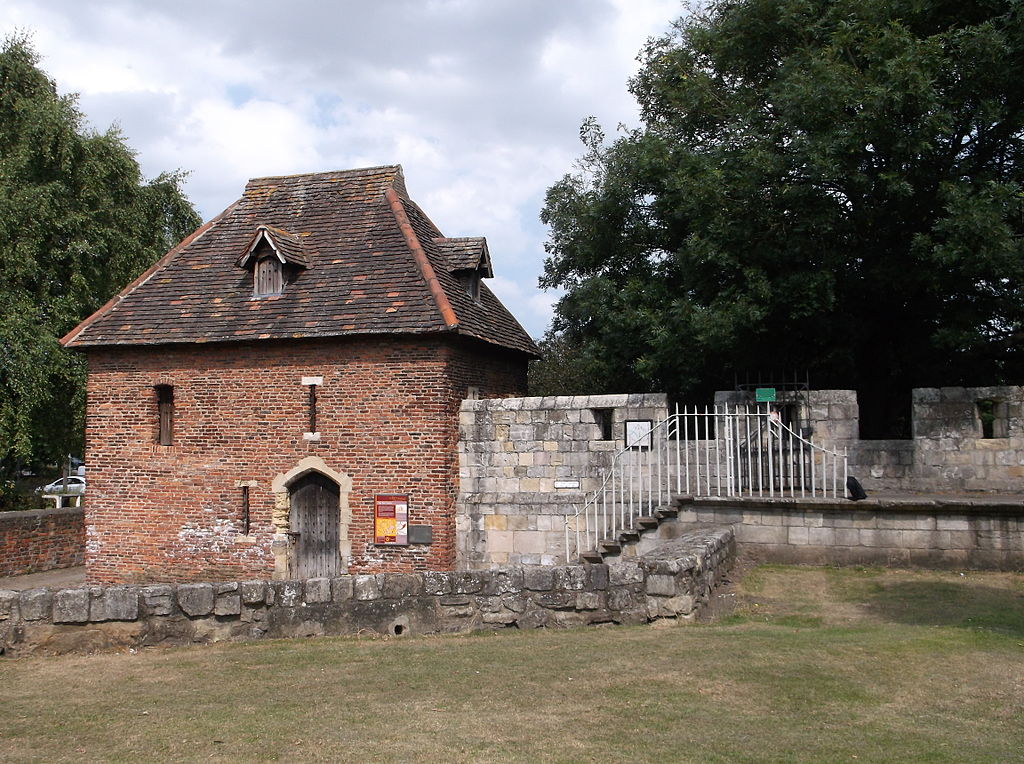The Red Tower is a distinctive and historically significant structure forming part of York’s medieval city walls. Located at the northeastern corner of the walls on Foss Islands Road, it stands out as the only brick-built tower among the predominantly stone fortifications. Constructed in the late 15th century, the Red Tower has witnessed centuries of York’s history, serving various roles from military defense to community hub.
Origins and Construction
The Red Tower was constructed in 1490 during a period of fortification enhancements under the reigns of Richard III and Henry VII. Its use of brick—a relatively novel building material in York at the time—was a cost-effective alternative to the traditional limestone. This choice led to tensions between the city’s Masons’ and Tilers’ Guilds, culminating in disputes and even violence, including the murder of tiler John Partrik, for which two masons were suspected but later acquitted.
Strategically, the tower marked the southern edge of the city walls where they met the King’s Fishpool, a large artificial lake created by damming the River Foss. This body of water served as a defensive barrier, and the Red Tower provided a vantage point to oversee and protect this area.
Architectural Features
Built on stone foundations, the Red Tower is a rectangular structure originally standing approximately 30 feet tall, though it now reaches about 16.5 feet excluding the roof. The tower features arrow slits on its upper floor and a garderobe—a medieval toilet—projecting from the north side. The use of brick not only distinguishes it aesthetically but also reflects the economic and material considerations of its time.
Role in the English Civil War
During the 1644 Siege of York in the English Civil War, the Red Tower and adjacent walls suffered significant damage from artillery fire, particularly from cannons positioned on Lamel Hill and in St. Lawrence’s churchyard. Despite the marshy terrain and the presence of the King’s Fishpool hindering the Parliamentary army’s advance, the area was heavily bombarded. Post-siege repairs commenced in 1645, including enlarging the ditch in front of the tower, and continued until 1648.
Decline and Restoration
By the late 18th century, the Red Tower had fallen into disrepair, depicted in a 1776 drawing as roofless and missing a wall. It was repurposed as a stable around 1800 and later known as “Brimstone House” due to its use as a gunpowder store. Significant restoration occurred in 1857–1858 under architect George Fowler Jones, who rebuilt much of the structure, added dormer windows, and installed a hipped tile roof. Further repairs were made in the 1970s and 2015, with the most recent re-roofing completed in 2023 to improve insulation and preserve the building’s integrity.
Modern Use and Community Engagement
In 2014, the Red Tower was transformed into a community hub managed by the Red Tower Community Interest Company. The space now hosts a weekly food bank, community arts, and social events, serving as a valuable resource for local residents. The building’s adaptive reuse was recognized with a York Design Award in 2018.
Visiting the Red Tower
Today, visitors can explore the Red Tower as part of the York City Walls walk. The tower offers insights into medieval military architecture and the city’s history. Its unique brick construction and storied past make it a notable point of interest for tourists and history enthusiasts alike.
Conclusion
The Red Tower stands as a testament to York’s rich history, reflecting the city’s medieval defenses, architectural evolution, and community resilience. From its contentious construction to its modern role as a community center, the tower encapsulates the dynamic narrative of York through the centuries.

